Testudo hermanni
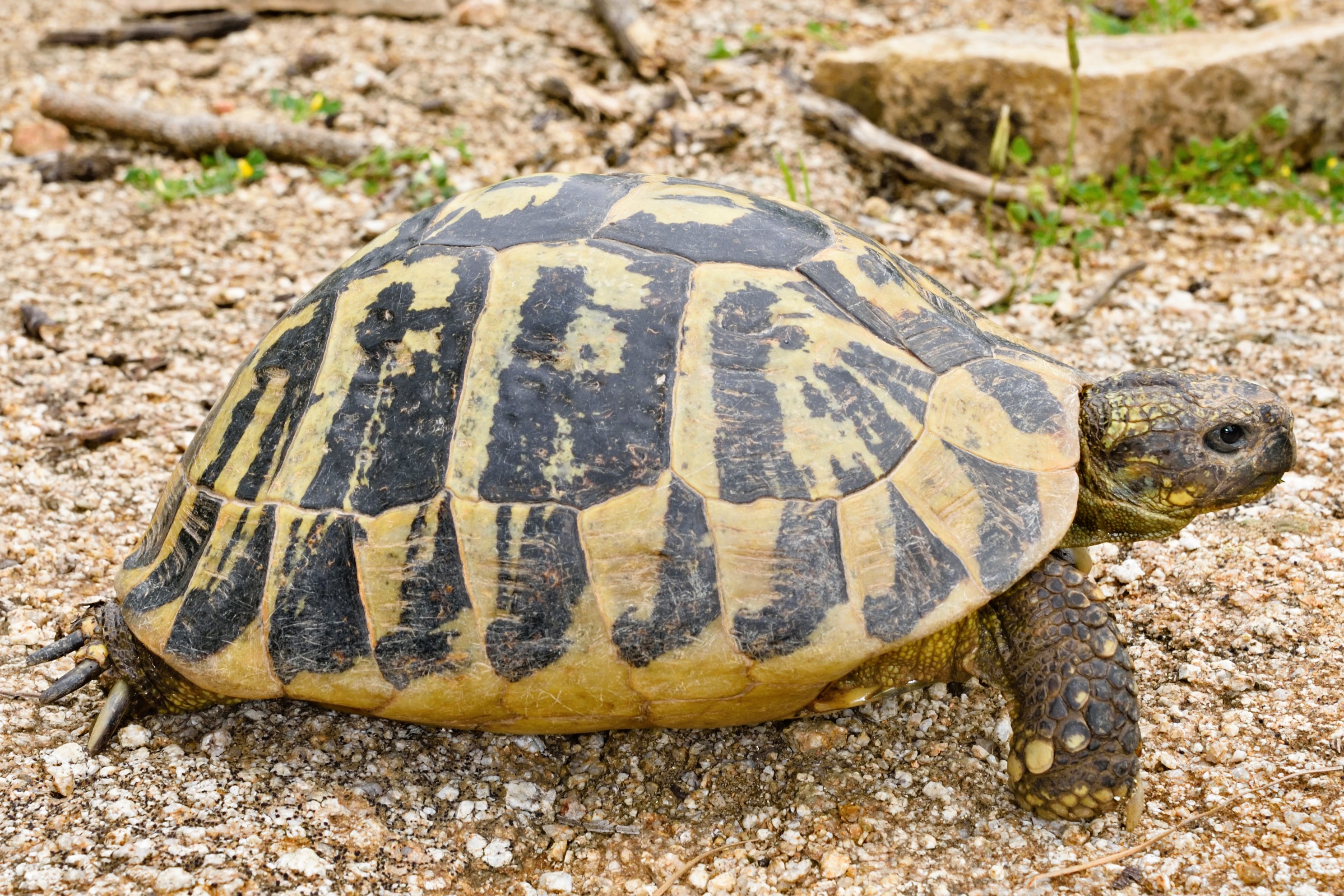

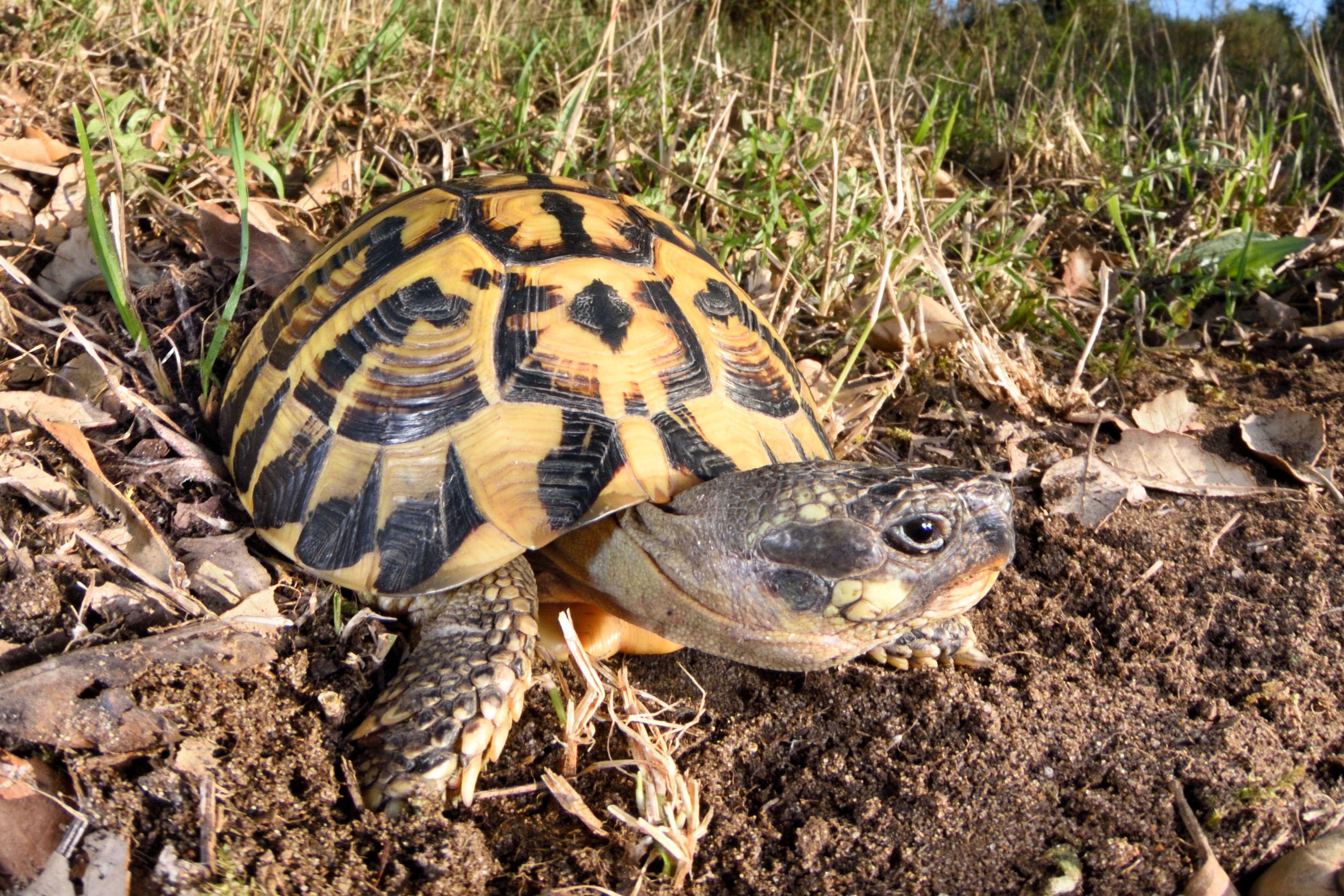
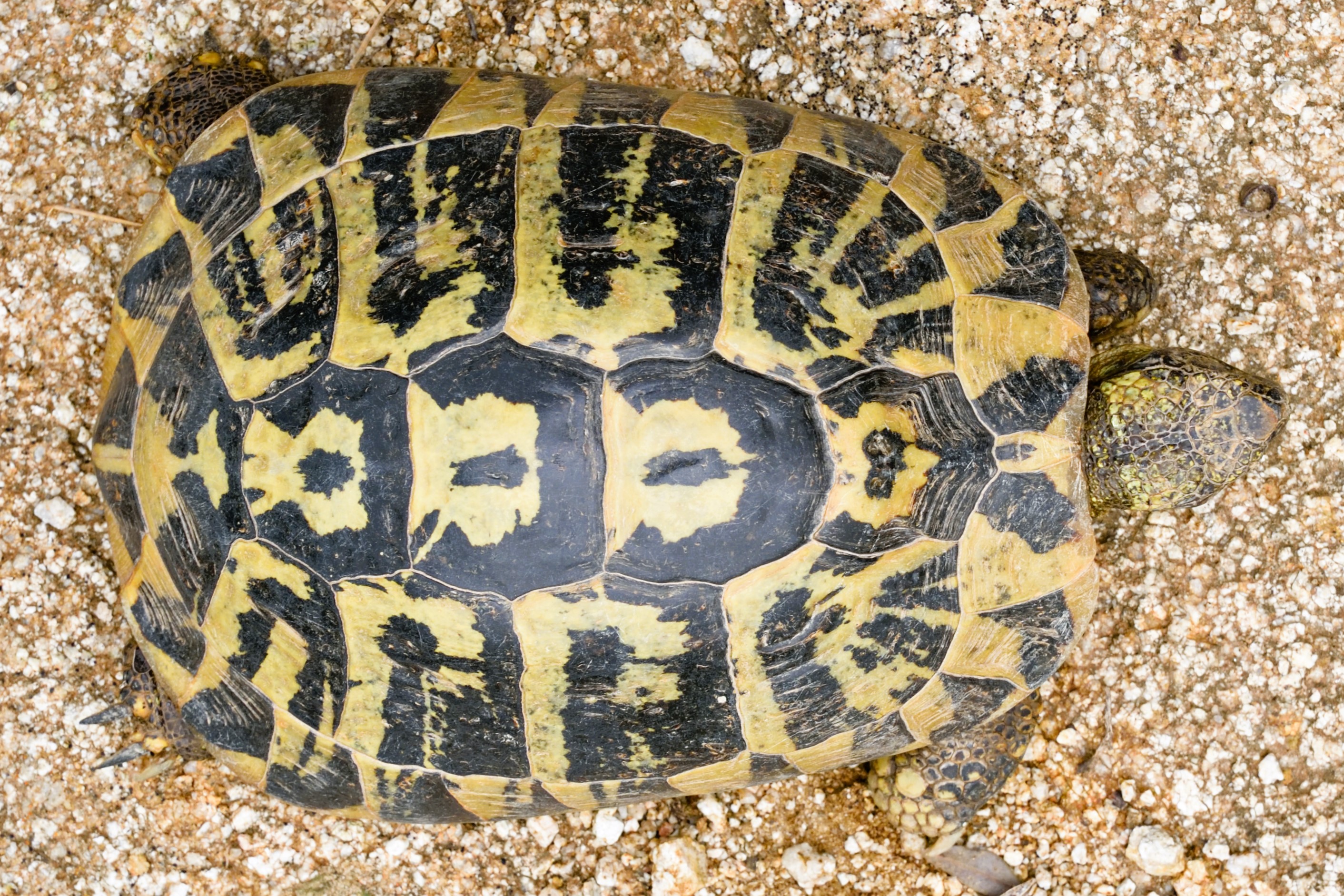
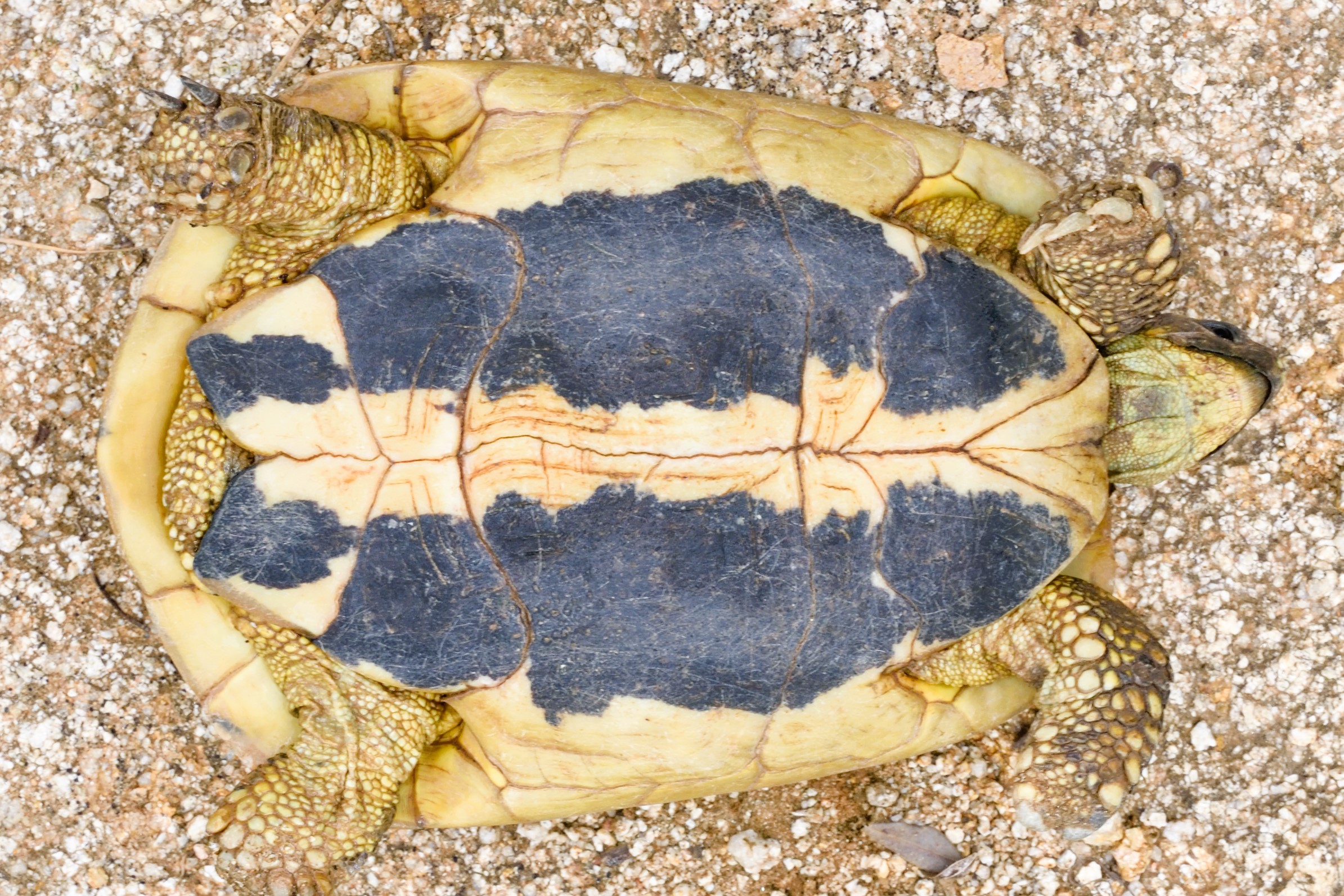
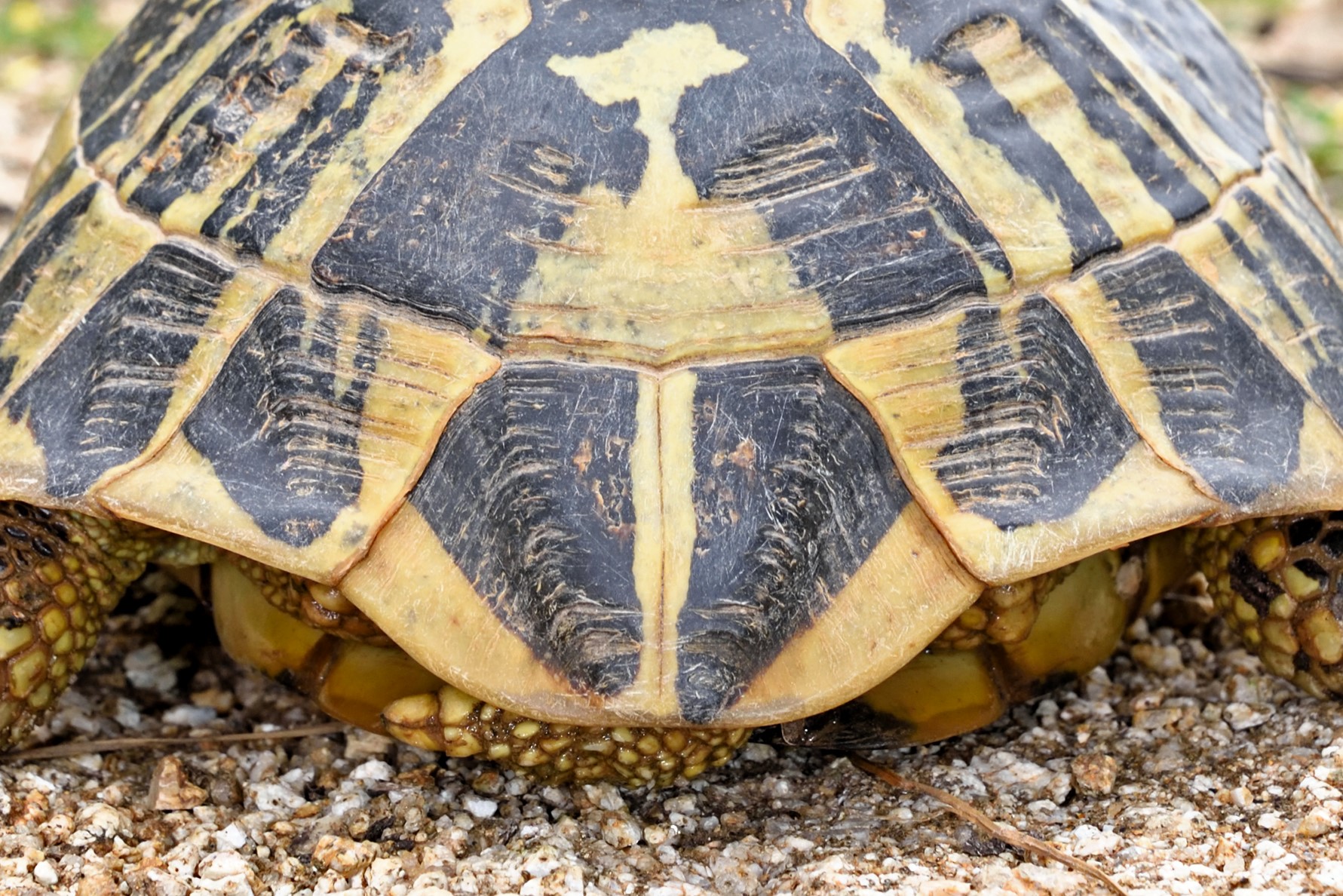
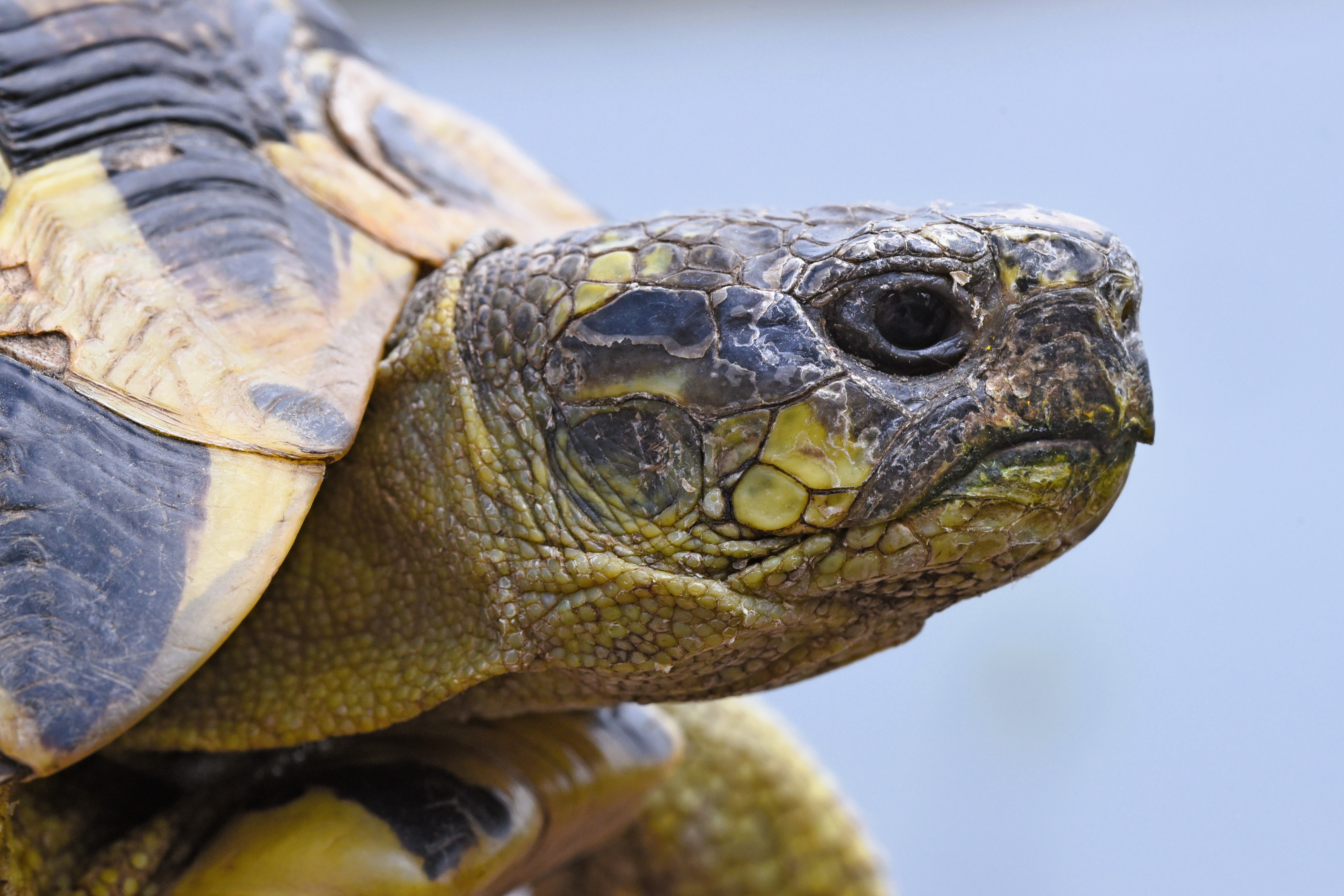
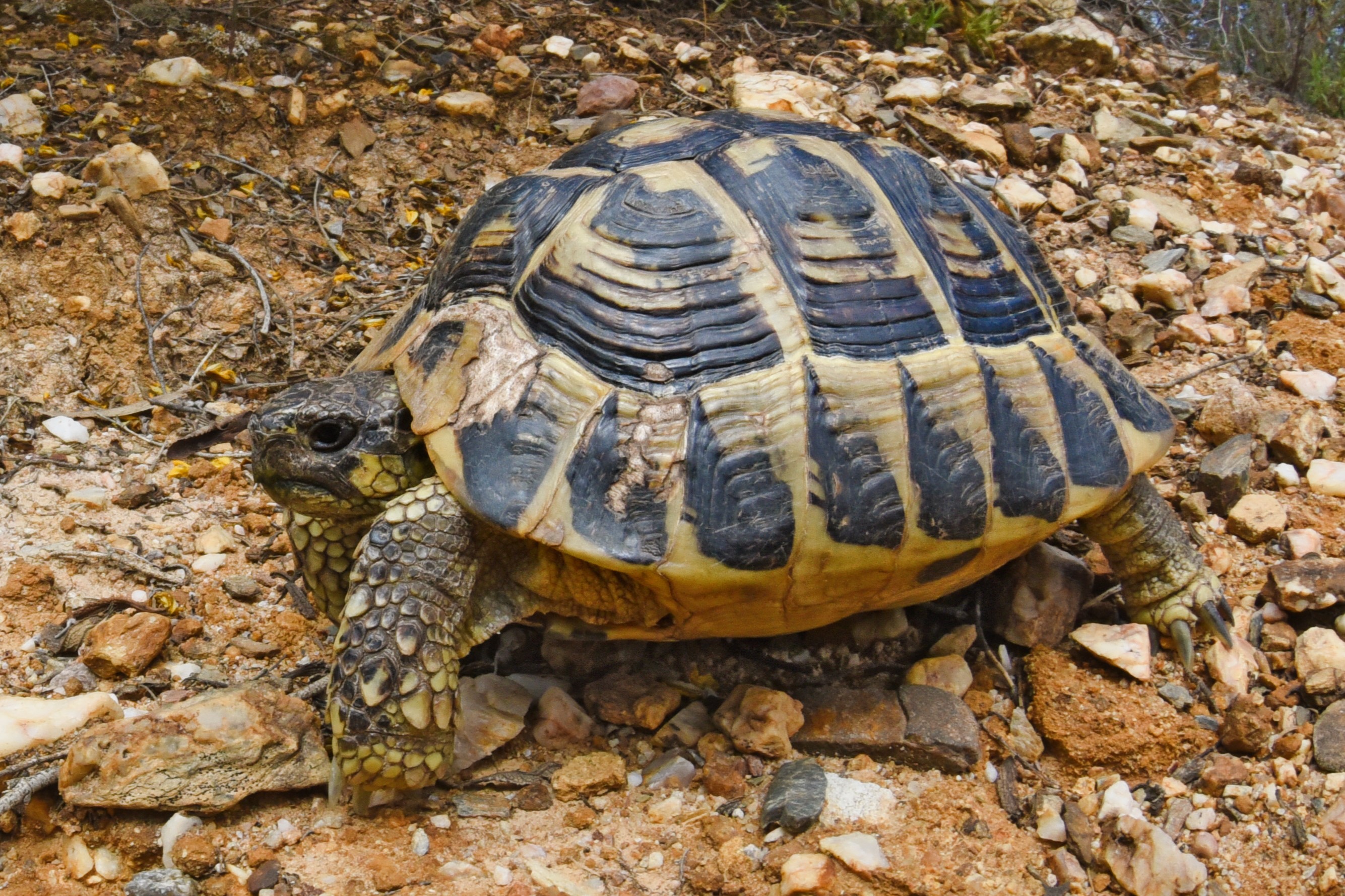
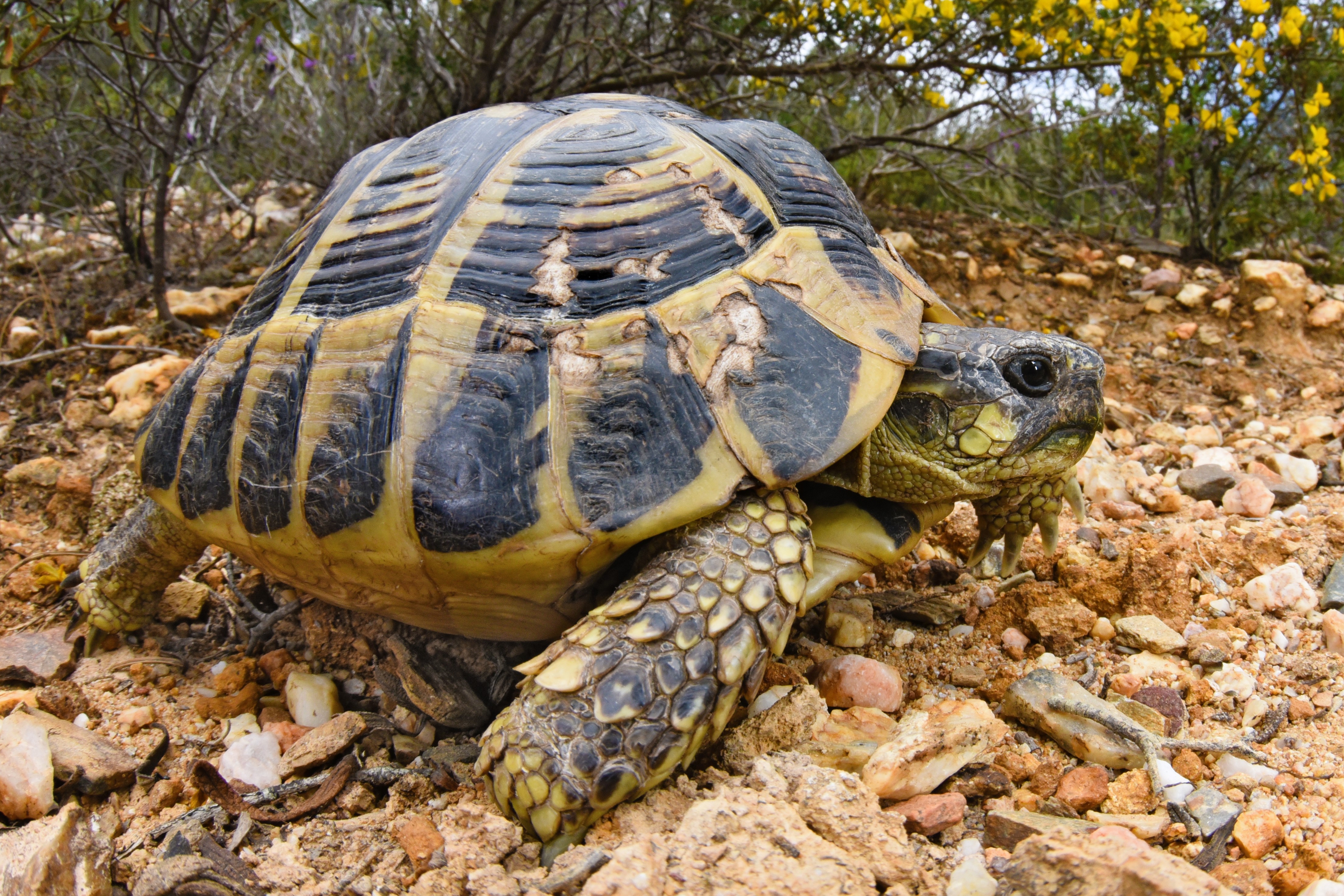
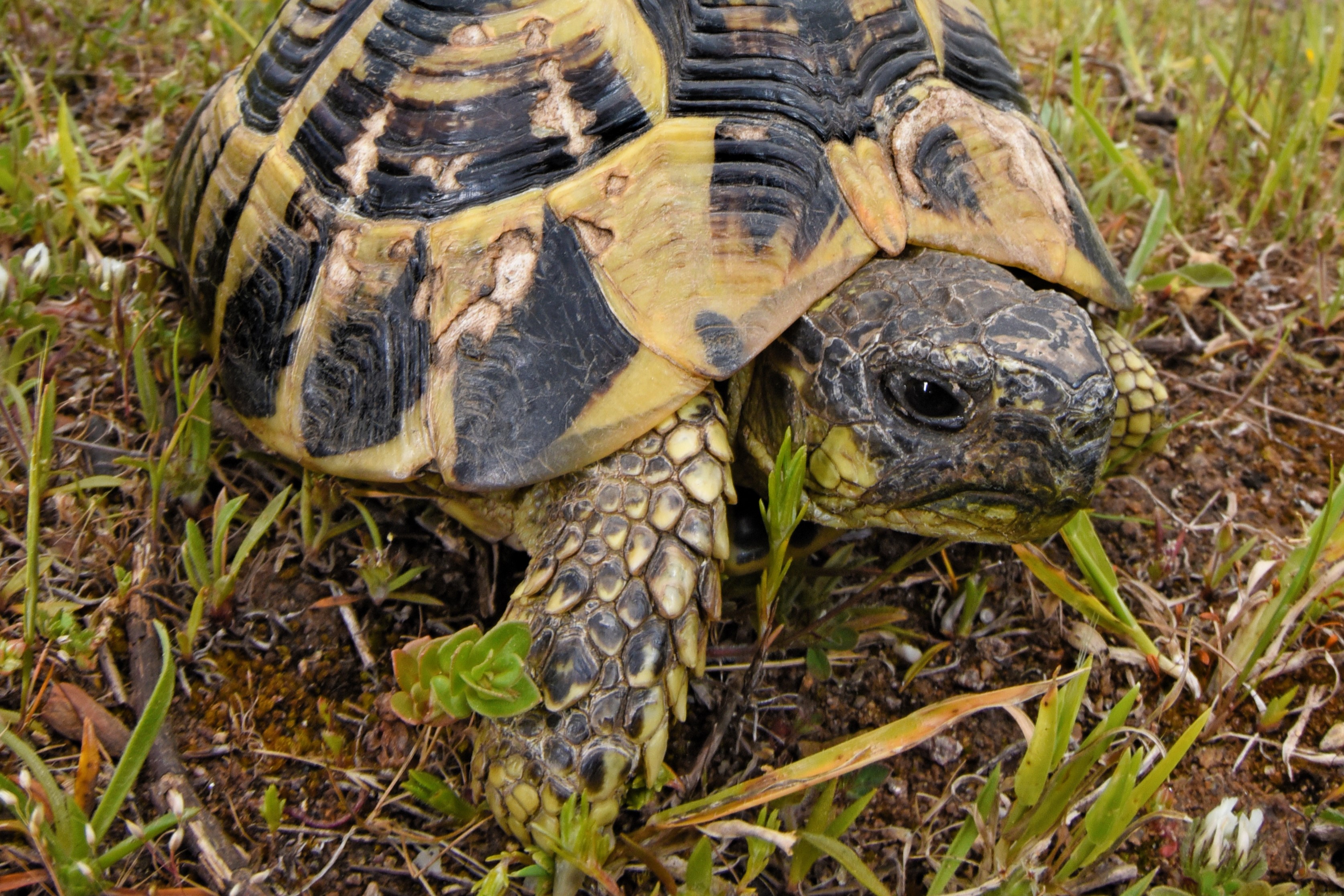
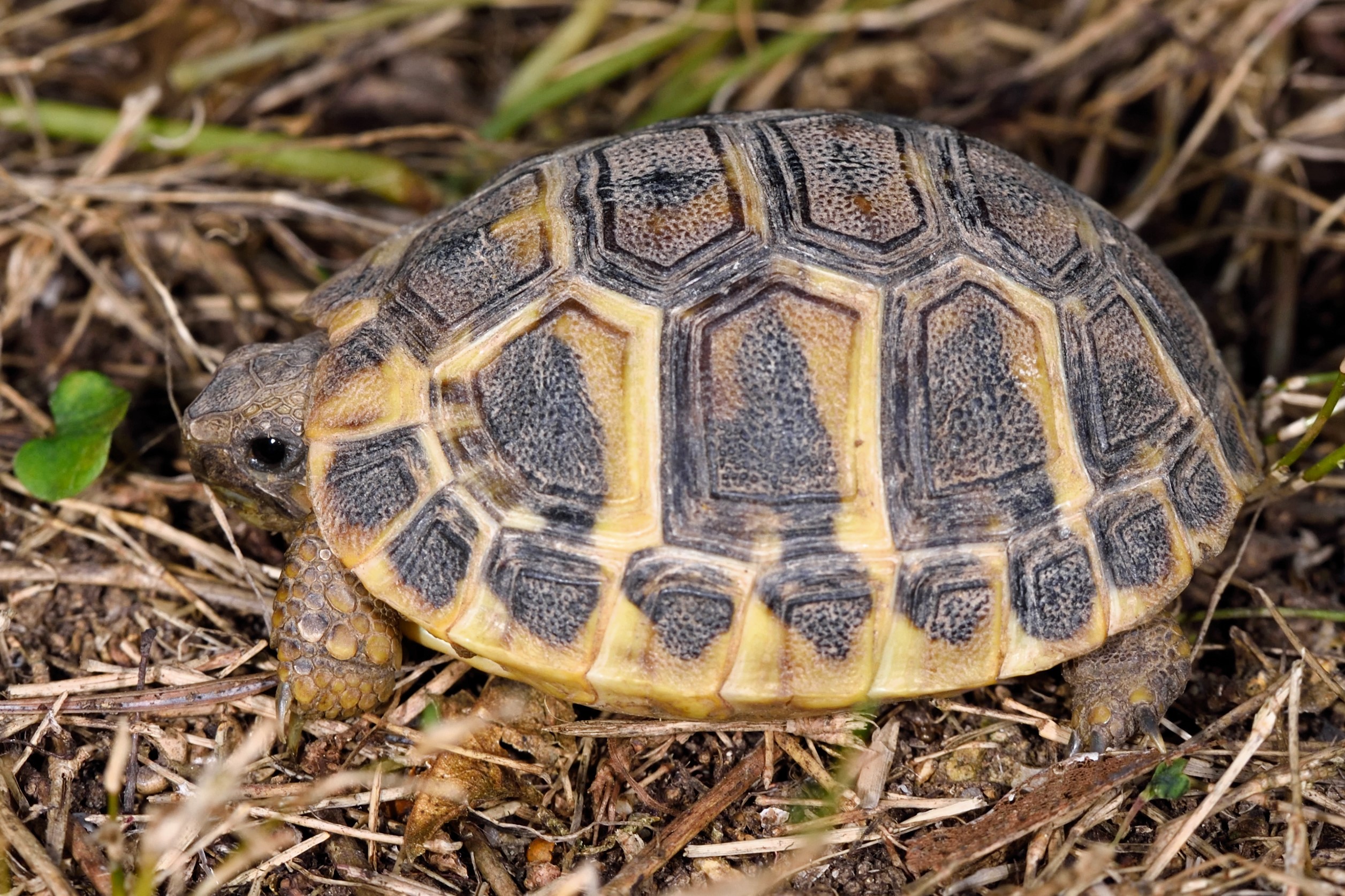
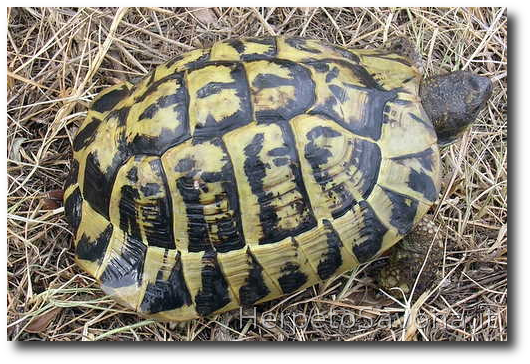
Reptilia → Testudines → Testudinidae → Testudo → Testudo hermanni
Tarta, Testuggi, Turtuga
Hermann's Tortoise is distinguished by its domed and robust carapace, higher than that of the European Pond Turtle ( Emys orbicularis ), and also by its coloration: the carapace background is yellow-ochre or orange, adorned with black markings that vary in shape and distribution among individuals.
There is marked sexual dimorphism: females can reach 7.1–7.9 in (18–20 cm) in length, while males rarely exceed 6.3 in (16 cm).
Sex can be determined by some morphological features:
Two characteristics allow Hermann's Tortoise to be reliably distinguished from similar species: the distinctly divided supracaudal plate (although it may be whole in some populations of the eastern subspecies) and the presence of a robust horny sheath at the tip of the tail.
Comparing the subspecies, the eastern form ( Testudo hermanni boettgeri) has a broader carapace, duller tones tending toward yellow-green, and irregular dark patches on the plastron, with a femoral suture similar to the pectoral one.
The western subspecies ( Testudo hermanni hermanni) can be recognized by two broad black bands on the plastron and a femoral suture longer than the pectoral one.
On the continent, there are three non-native species of the genus Testudo (Testudo graeca, Testudo hermanni , Testudo marginata), but only T. hermanni is native to both peninsular and insular Italy.
This species is split into two recognized subspecies:
Once a companion of rural landscapes and widely spread in the western Mediterranean range, today the population of Testudo hermanni hermanni is dramatically reduced and confined to limited remnant areas.
In Liguria, its current presence is considered non-native: the few specimens found in recent decades are the result of illegal releases or escapes from captivity; there is no convincing evidence of stable native populations in the province of Savona or the entire region.
The only significant population near Liguria survives in the Var department (France), thanks to protection and reintroduction projects (SOPTOM).
The typical habitat is sunny Mediterranean scrub dominated by Holm oak (Quercus ilex), alternating humid, shady areas with open garigue and dry undergrowth, with plenty of bushes providing refuge.
Hermann's Tortoise does not disdain more human-shaped environments such as clearings, field margins, and mixed woodlands of Downy oak (Quercus pubescens) or Cork oak (Quercus suber).
In summer, it seeks cool areas to avoid dehydration, while in winter it selects dry, south-facing, well-sheltered sites for hibernation.
It generally stays below 1,300 ft (400 meters) in elevation (occasionally up to 2,000 ft [600 meters] in Corsica).
Microdistribution depends on the availability of refuges, tranquility, and richness of food resources.
A shy and not very social species, Hermann's Tortoise adopts a predominantly solitary lifestyle, with interspecific interactions mostly limited to reproductive periods.
Males may show episodes of mutual aggression not for territory but simply due to the presence and competition among individuals.
Activity takes place from mid-March to late October, interrupted by a protected lethargic state in burrows dug in the ground during winter.
The peak of vitality occurs in spring, when the search for mates prompts even significant movements.
Mating—generally rough—is characterized by biting and attempts by the male to immobilize the female, followed by mounting.
The interval between mating and egg laying is around 20 days.
Females lay, on average, 3 to 5 eggs each breeding season, occasionally repeating the laying after 2–3 weeks.
Eggs are slightly larger than those of the European Pond Turtle ( Emys orbicularis ).
Hatchlings emerge after about 90 days, with sex determined by the average incubation temperature.
The diet of Hermann's Tortoise is mainly herbivorous and based on a wide variety of wild herbs (notably grasses and legumes), ripe fruit, flowers, dry leaves, and occasionally small invertebrates such as snails and earthworms.
It is not partial to aromatic herbs (thyme, lavender, rosemary), but it is not uncommon to see it practice geophagy, ingesting dry leaves, soil, and stones to supplement calcium and mineral salts needed for bone metabolism.
The main threat is the predation of eggs by opportunistic mammals such as the Fox (Vulpes vulpes), Beech marten (Martes foina), and Badger (Meles meles), which can destroy entire clutches within hours after laying.
Studies conducted in France (Var) estimate losses of up to 95% of eggs within 48 hours.
Another long-standing threat is recurrent fires in Mediterranean scrubland, often fatal for adults and especially for embryos and hatchlings.
Illegal collection, habitat destruction, vehicle impacts, and human-caused landscape changes also contribute to the risk of local extinction.
Among the most spectacular behaviors are the ritualized fights between males, which are not for territorial defense or the conquest of a female, but to assert individual presence.
The challengers tactically observe each other, biting necks and forelimbs, then retracting the head to charge and noisily strike the opponent's carapace.
The sound produced can be heard up to 200–230 ft (60–70 meters) away and is a typical signal in areas colonized by the species.